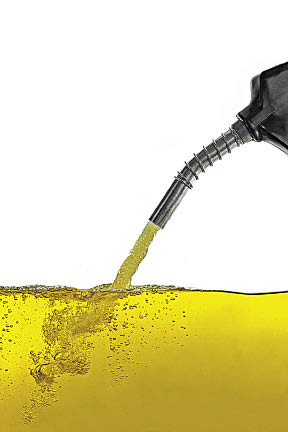In the November issue of SnoWest Magazine (“E15 Ethanol: How Does It Effect You?” November, 2012, page 46), we detailed some questions surrounding the E15 (15 percent ethanol blend) and the potential harmful effects it could have on snowmobiling.
Well we recently came across a press release from the automotive group Triple AAA that we find very interesting.
Interesting because E15 is supposed to be safe for cars.
Here it is. http://newsroom.aaa.com/2012/12/suspend-sale-of-E15-gasoline/
Suspend Sale Of E15 Gasoline
By Robert L. Darbelnet, President and CEO of AAA
Published first in The Hill on Dec. 13, 2012
 The Environmental Protection Agency (EPA) and gasoline retailers should suspend the sale of E15 gasoline until more is done to protect consumers from the potential for costly auto damage and voided warranties.
The Environmental Protection Agency (EPA) and gasoline retailers should suspend the sale of E15 gasoline until more is done to protect consumers from the potential for costly auto damage and voided warranties.
Research to date raises serious concerns that E15, a fuel blend consisting of 15 percent ethanol and 85 percent gasoline, could cause accelerated engine wear and failure, fuel system damage and other problems such as false “check engine” lights.
The potential damage could result in costly repairs for unsuspecting consumers. This is especially tough for most motorists given that only about 40 percent of Americans have enough in savings to afford a major auto repair.
In June, the EPA approved the use of E15, and a handful of gas stations in Nebraska, Iowa and Kansas have begun to sell this fuel. There is a strong likelihood that retailers will market E15 in additional states soon unless regulators take immediate action to protect consumers.
Nearly all of the gasoline sold in the United States today is E10, which contains up to ten percent ethanol, primarily produced from corn. The ethanol industry has lobbied hard to increase the amount of ethanol allowed in gasoline as a way to increase sales and help meet the Renewable Fuels Standard.
AAA’s concern with E15 is not about ethanol. In fact, AAA believes that ethanol-blended fuels have the potential to save Americans money and reduce the nation’s dependency on fossil fuels. The problem is that available research, including the EPA’s exhaust emissions tests, is not sufficient evidence that E15 is safe to use in most vehicles.
The ethanol industry’s response to reports of damage caused by E15 is that it is the most tested fuel in the EPA’s history. The caveat to this assertion is that while the agency did test E15, their research focused primarily on exhaust emissions and associated components such as catalytic converters. While this research was consistent with the EPA’s mission, it never fully examined whether E15 might damage engines and fuel systems.
Some of those supporting E15 admit the fuel may cause damage. For example, the Renewable Fuels Association warned retailers that some underground storage tank systems, both new and used, exhibited reduced levels of safety and performance when exposed to E15. In addition, earlier this year the industry testified before Congress in support of legislation that proposed to give fuel producers blanket liability protections, while providing no protections to motorists. If the industry is not confident enough to take responsibility for the risks of E15, is it right that the risks be passed onto consumers?
Automakers advise they may void warranties for anyone using E15. Five manufacturers (BMW, Chrysler, Nissan, Toyota and Volkswagen) state their warranties will not cover E15 claims. Eight additional automakers (GM, Ford, Honda, Hyundai, Kia, Mazda, Mercedes-Benz and Volvo) state that E15 does not comply with fuel requirements specified in most owners’ manuals and may void warranties. It is difficult to comprehend why the EPA would choose to ignore all these warnings.
The automakers’ position is understandable given that most cars were never designed for E15. Only about five percent, or 12 million of the more than 240 million light-duty vehicles on U.S. roads today, are approved by manufacturers to use the fuel. These vehicles include flex-fuel models, 2001 and newer Porsches, 2012 and newer GM vehicles and 2013 Fords. So unless you drive a Porsche or a brand new car, you could be out of luck when it comes to E15.
The only responsible action to take now is to suspend the sale of E15 until consumers are better informed and protected at the pump. AAA did not come to this decision lightly. We arrived at this recommendation only after extensively reviewing the existing research, surveying automakers and conducting a national poll finding that only five percent of Americans had heard of E15.
The simple truth is that E15 is a product not yet ready for public consumption, and government regulators have an obligation to suspend sales until these issues are addressed.
AAA recommends the EPA, fuel producers and automakers collectively develop a long-term plan that promotes public education, while implementing improved labeling and warnings at the pump. Additional research also is necessary to better understand the full consequences of using E15 in older and newer vehicles.
AAA urges regulators and the renewable fuels industry to consider the interests of consumers first by immediately suspending the sale of E15 before American motorists are left footing the bill.